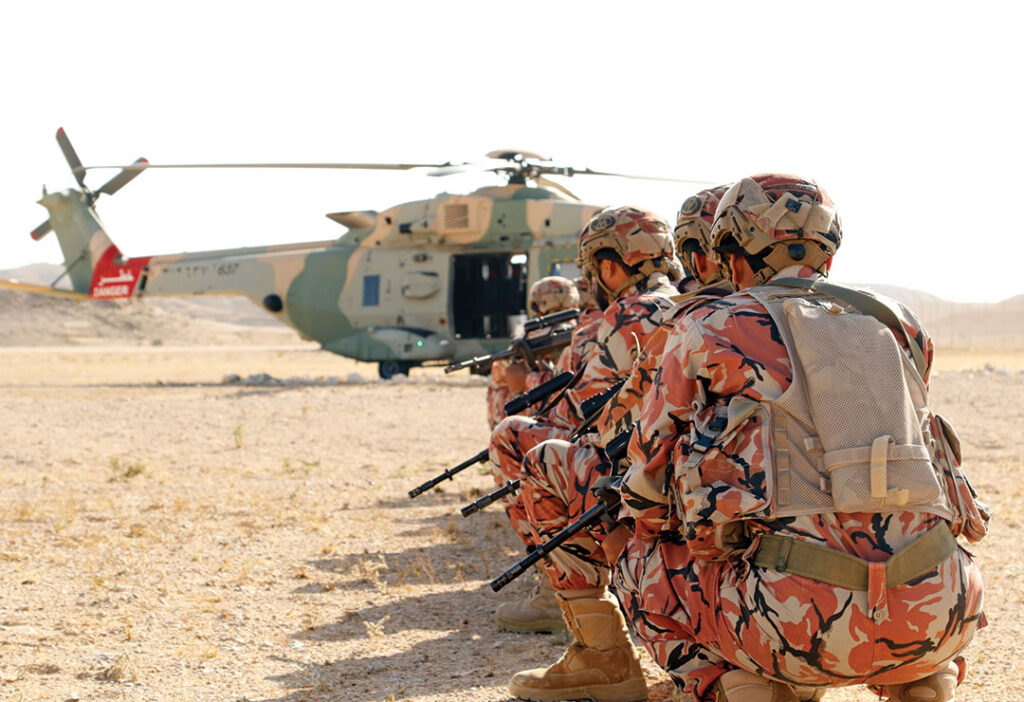UNIPATH STAFF
Three weeks of training between the Royal Army of Oman and the U.S. Army culminated in an explosion of mortars, mines and missiles in a dry riverbed near Rabkoot.
It was the climax of the annual Inferno Creek exercise in February 2019, designed to enhance tactical proficiency and interoperability between troops of the two countries.
“When we sweat together and we do training exercises like this, we all win,” U.S. Maj. Gen. Ben Corell said. “To build strong relationships … you’ve got to train together, you’ve got to sweat together, you’ve got to participate in the exercise, and that’s what we’ve done here.”
Most Omani participants came from the 11th Brigade of the Royal Army of Oman. U.S. troops were part of Task Force Spartan, a multicomponent unit that supports operations in U.S. Central Command’s area of responsibility.
Task Force Spartan has trained with troops from countries such as Egypt, Jordan, Kuwait, Qatar and the United Arab Emirates.
“We’ve been able to train with our Jordanian partners, local partner forces in Syria as well as the Kuwaiti Land Forces,” said U.S. Army Capt. Charles Woods, who trained at Inferno Creek 19. “For our guys, it’s a great opportunity to see how the Omanis work differently than other countries.”
Although most of the action occurred in the rocky deserts and mountains near Rabkoot, battalion staff from both militaries directed operations from a command center at Thumrait Air Base.
For the 2019 exercise, Omani commanders requested that their troops receive air assault training, so U.S. troops engaged the Royal Army of and the Royal Air Force of Oman. Before Inferno Creek 2019, infantrymen in the 11th Brigade had never performed an air assault.
Among the weaponry used was mortars, sniper rifles, claymore mines, attack helicopters and Javelin anti-tank missiles. Source: U.S. Army

